

BUSINESSPROPOSAL
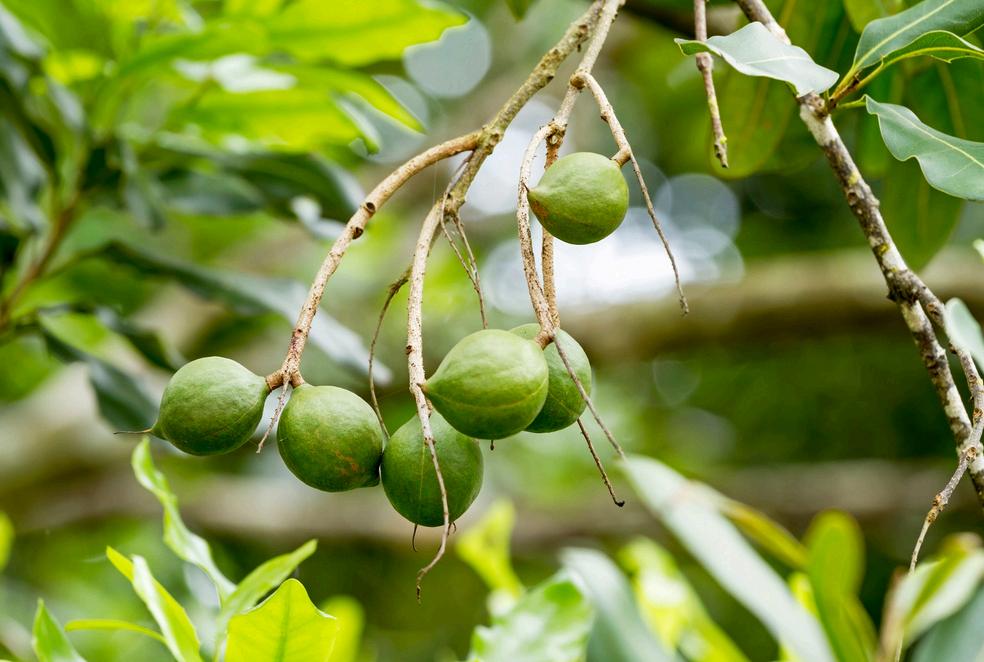
Investing in research and innovation to secure sustainable and inclusive development of northern Australia
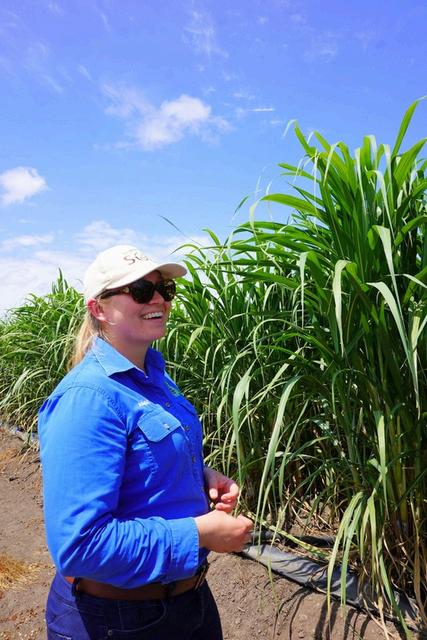
2025



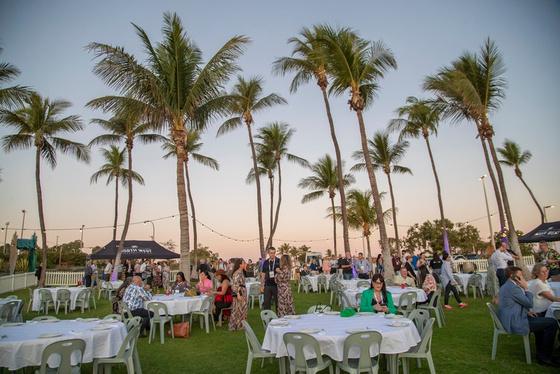
Recognising the continuing connection to Sea and Land Country of Australia’s First Nations People, the authors acknowledge the Traditional Custodians of the land and waters of northern Australia, and pay respects to their Elders past, present and emerging
This business proposal was developed by the Cooperative Research Centre for Developing Northern Australia (CRCNA). It is intended for the nominated recipients only and is not to be shared or distributed further Published in July 2025, all figures and information were accurate at the time of publication but may be subject to updates or revision
Executive summary
Northern Australia stands at a critical juncture. Achieving sustainable, inclusive growth requires a more diversified and resilient economy, built on research, development, innovation, local capability, and climate-smart industries.
Context
Response
Research and development (R&D) is vital to building economic complexity, a proven driver of productivity, growth and resilience. Innovation also enables more cost-effective service delivery in health, environmental and remote contexts
In northern Australia, every $1 invested in R&D returns over $330 in economic output, alongside critical social and environmental gains However, the region’s sparse population and limited economic base make sustained investment both more challenging and more essential.
Since 2017, the CRCNA has delivered over $155 million in R&D investment, driving cross-sector innovation suited to the north. With its term ending in 2027 and funding fully allocated, there’s a pressing need to sustain and scale this momentum
Proposal
R&D aligned with national priorities
Extension and capacity building to translate research into real-world impact, supporting First Nations and regional leadership and skills.
Place-based solution brokerage that aligns investment with local social, economic, cultural, and environmental priorities 1 2 3
Governance at a glance
A not-for-profit model reinvesting all returns into northern R&D
An expertise-based Board with sectoral depth and diversity and an independent, Minister-appointed Chair
Inclusive representation from research, First Nations, industry, and governments.
Become part of northern Australia’s long-term architecture, supporting NAIF pipelines and helping integrate complex policy issues across the region
Next steps
A Commonwealth commitment of $100-120 million over ten years will anchor the CNA and unlock an estimated $330-350 million in investment.
Policy and funding decisions are needed within 6-8 months for effective planning and transition
Delivering on the northern Australia agenda
Australia’s success depends on a thriving northern Australia.
Sustainable development in northern Australia hinges on two critical components:
diversifying and increasing the productivity of economic activities
enhancing livability and well-being for residents and communities 1 2
Both are essential to regional and national resilience.
Productivity remains a national challenge
The 2010s marked Australia’s weakest decade for productivity growth since the post-war era. Northern Australia must play a central role in reversing this trend by contributing to national economic efficiency and innovation, including through cost effective service delivery innovations
A robust R&D strategy is essential, one that is inclusive, place-based, and attuned to the region’s unique social, environmental, and economic characteristics This strategy must:
leverage local knowledge and expertise
foster meaningful, cross-sectoral partnerships
drive innovation that reflects northern Australia's realities and aspirations
At the heart of this vision is the need for platforms that encourage collaboration, amplify diverse voices, and enable transformative ideas to emerge
A Centre dedicated to northern Australia’s development can catalyse this shift, not just by funding research, but by coordinating efforts, extending impact, and embedding innovation into the region’s economic and social fabric
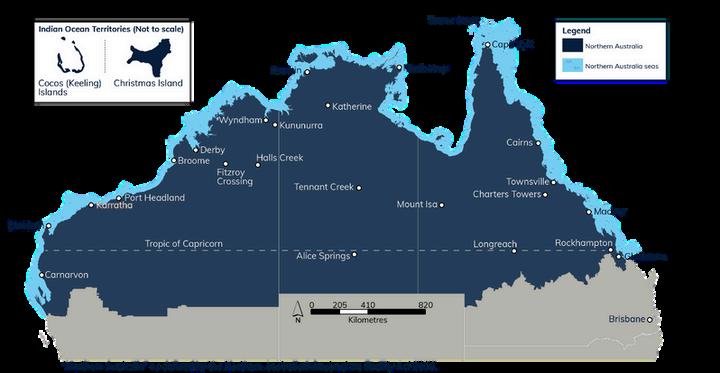
Constraints and challenges
Economic development and productivity growth in northern Australia faces several challenges and constraints:
1 2 3 4 5 6 7 8
9
Infrastructure limitations – vast distances and dispersed populations make transport and logistics costly and inefficient
Workforce and skills shortages – a small population base limits the availability of skilled labour, affecting industry growth.
Economic complexity – the economy remains narrow, increasing vulnerability to global market shifts and reducing innovation potential
Cultural and land considerations – development must acknowledge Indigenous land rights and cultural heritage, requiring trust-based collaboration.
Environmental and climate challenges – harsh conditions and extreme weather events impact agriculture, tourism, infrastructure, and liveability.
Investment uncertainty – complex regulation, navigating land tenure, and high operating costs make investment riskier and less attractive.
Service gaps – many areas lack reliable access to health, education, and affordable food, driven by low population densities and economies of scale.
Connectivity barriers – limited access to high-speed internet and telecommunications stifles innovation and modern service delivery
Institutional fragmentation – overlapping jurisdictions and policy silos hinder coordinated R&D investment and delivery
Addressing these challenges demands a coordinated, long-term commitment from government, industry, and communities, with research and development playing a central role in identifying solutions, unlocking opportunity, and de-risking investment.
Enhancing productivity: the path forward
Since 2017, the CRCNA’s industry focus has supported productivity gains across the north. Contributing to national goals in sovereign capability, cost-effective service delivery, and evidence-based policy, they align with the Future Made in Australia agenda, enhancing locally led innovation and strategic de-risking.
These models show how place-based innovation can boost productivity and system resilience while de-risking investment and reducing reliance on narrow exports, with industries like agriculture playing a critical role in national food and fibre production. This positions northern Australia as a vital driver of economic resilience and sovereign supply.
Innovation in cost effective service delivery
Health research in telehealth, nutrition, and culturally aligned care has improved access to remote services, strengthened local health outcomes, and lowered delivery costs across rural and northern communities
Biosecurity projects have reduced impacts of feral animals, invasive species, and disease, safeguarding productivity, strengthening supply chains, and cutting long-term management costs
First Nations leadership & enterprise
Projects in aquaculture, forestry, carbon markets, and cultural economies have embedded First Nations priorities into local economic development on Country
Initiatives reflect a shift from transactional to transformative partnerships, generating new regional value chains, boutique products and leadership with education, economic and health outcomes
Regional, evidence-based planning
Critical data and spatial tools have improved policy decisions, guided land-use planning, and strengthened infrastructure prioritisation across regions and sectors.
Scientific insights strengthen regional investment cases, reduce development risk, and enable government and industry to act with greater confidence.
Supports RDAs and development groups by aligning local aspirations with national priorities.
De-risking supply chains & emerging industries
CRCNA investments have mapped regional constraints through local governance and catalysed emerging industries in:
Tropical agriculture and aquaculture to new water infrastructure, digital farming and ecosystem services
Projects that de-risk private investment and diversify the economic base are positioning the north as a key driver of national resilience and sovereign supply capacity.
First Nations leadership and enterprise
Supporting Indigenous-led enterprises, spanning land and sea management, carbon farming, tourism, and innovation, is vital for inclusive development that strengthens self-determination and advances Closing the Gap outcomes.
Empowering First Nations communities is essential to unlocking northern Australia’s economic and social potential, with Indigenous peoples holding deep connections to Country and interests across more than 78% of the region. The following CRCNA projects illustrate tangible contributions to Closing the Gap outcomes in economic participation, health, education, and cultural preservation
Education Economic
Outcomes 6, 7: Students reach their full potential by engaging in education; and employment pathways.
CRCNA education program: workforce development training, postgraduate and undergraduate student programs
East Kimberley Indigenous Women: Self-development and self-employment.
Project Echo: Telehealth Skills and Health eMinds workforce training
Health, Wellbeing & Culture
Outcomes 1, 14, 16: Everyone enjoys long, healthy lives; with strong social and emotional wellbeing; supported by thriving cultures and languages.
Attracting and retaining ATSI health workers; Health equity; Well-being informed health care.
Eye screening; Economic assessment, Disability models for remote regions
Telehealth and technician training for remote communities.
Telehealth for chronic diabetic foot disease; Chronic kidney digital nutrition
Outcomes 8, 15, 17: Strong economic participation supports community development; cultural connection to land and waters; and access to information for informed decision-making.
Activating the Indigenous estate: Baseline study of agricultural capacity.
Business on Country: Land use diversification; Developing high value products from low value herds
Spatially enabled planning for Groote Eylandt.
Cape York Water Plan; Water Security Program Daly, NT and Gilbert, NQ catchments - resources, values and enterprise mapping
Indigenous seafood industry development; Blacklip Rock Oyster industry development; Commercial fishing and aquaculture in WA; Cherabin aquaculture production
Traditional Owner led bush products sector; Kakadu Plum value chain efficiencies.
Tiwi Islands northern tropical forestry
Cultural market systems development
Co-mapping on Country: Train the Trainer for sustainable agricultural development.
Economic and social opportunities across sectors
Reaching our potential: northern Australia has significant opportunities to achieve sustainable and long-term growth across various sectors:
Indigenous-led enterprises – supporting Indigenous businesses in areas like land management, cultural tourism, and carbon farming can drive economic growth while respecting traditional knowledge 1 2 3 4 5 6 7 8
Aquaculture, agriculture and agribusiness – expanding sustainable farming practices, including aquaculture and seafood products, tropical crops, livestock, and precision agriculture, to boost productivity while preserving natural resources.
Water and land management – sustainable irrigation and land-use strategies can enhance agricultural output while maintaining environmental integrity
Tourism and ecotourism – leveraging iconic landscapes, Indigenous heritage, and biodiversity to create sustainable tourism ventures that benefit local communities
Renewable energy – the region has vast potential for solar, wind, and hydrogen energy projects, supporting Australia's transition to clean energy.
Carbon economy – initiatives such as carbon farming and ecosystem services can provide economic benefits while addressing climate change.
Infrastructure development – investments in transport, supply chains, digital connectivity, and logistics that improve access to markets and attract business investment.
Mining and resources – sustainable extraction and processing of minerals, including critical minerals for renewable technologies, contributing to economic resilience.
Unlocking this potential requires a coordinated, long-term approach that embeds R&D into every phase, from identifying opportunities to de-risking investment and ensuring inclusive benefit-sharing across industries and communities
Policy context
The development of northern Australia has long been a national priority.
The 2015 Our North, Our Future White Paper laid the foundation for a 20-year vision to unlock the region’s potential Building on that framework, the Northern Australia Action Plan 2024–2029 sets a refreshed, forward-looking agenda that responds to emerging challenges and aspirations.
The Action Plan outlines six overarching policy priorities:
Unlocking growth through infrastructure 1 2 A safe and secure north Growing the northern workforce 3 4
Activating the northern economy
Liveable, healthy, and resilient communities
Protecting the north’s environment and cultural heritage. 5 6
Key cross-cutting themes include:
Advancing First Nations outcomes
Enabling transformational investment
Supporting the transition to net zero
Delivering on the Future Made in Australia agenda
Strengthening national security
Investing in resilient infrastructure.
In tandem, the National Science and Research Priorities (2024) highlight the areas of research critical to solving Australia’s greatest challenges These include:
Transitioning to a net zero future
Supporting healthy and thriving communities
Elevating Aboriginal and Torres Strait Islander knowledge systems
Protecting and restoring Australia’s environment
Building a secure and resilient nation.
These national agendas are deeply relevant to northern Australia and underscore the need for a dedicated institution to align R&D investment with these goals
The proposed CNA will be instrumental in delivering research and innovation that supports these policy objectives, not only in economic terms but across social, environmental, and cultural dimensions
How does the CNA fit with other major Commonwealth institutions?
The Australian Government has established several institutions to drive sustainable development in northern Australia The CNA is not intended to duplicate existing efforts but to bridge policy, science, and investment, acting as a catalyst and coordinator across sectors
Northern Australia Infrastructure Facility (NAIF) is the government’s flagship financier for the region With over $4.4 billion in committed loans across 32 projects, it supports infrastructure in energy, transport, agriculture, and social services, with a strong emphasis on Indigenous engagement and job creation NAIF's role is to fund development-ready infrastructure.
The CNA will complement this by delivering the applied R&D, data, and planning frameworks required to get projects to that stage
Office of Northern Australia (ONA) provides policy oversight and strategic coordination across Commonwealth agencies
The CNA will work closely with ONA to translate national policy into regional action, aligning R&D investment with evolving government priorities
Inform emerging priorities of both the Indigenous Reference Group and the Northern Australian Ministerial Forum
Universities and research institutions
The CNA will foster collaboration across research providers, including the Northern Australia Universities Alliance, CSIRO, Drought and Innovation Hubs, and universities, including the University of Western Australia.
It will help align scientific capabilities with industry needs and regional aspirations, acting as a broker, funder, and integrator
Regional Development Australia
Building on a strong history of collaboration, RDAs drive regional development by coordinating planning, partnerships, and advocacy across northern Australia's diverse communities and industries.
The CNA complements the northern RDA alliance by generating the evidence base, pilot projects, and applied research that inform and strengthen RDA-led regional development efforts
Strengthening planning and investment decisions with evidence-based insights, aligns with RDA strategies, and helps turn regional visions into practical, investment-ready opportunities.
The relationship is one of partnership and mutual reinforcement.
The CNA is not designed to duplicate existing efforts but to strengthen the evidence base by bridging research, policy, and investment It will act as a catalyst and coordinator, translating data and knowledge into action across sectors, helping to de-risk development in areas where the north has the most potential for sustained growth
The CNA will continue the CRCNA’s crossportfolio approach, working with at least seven federal portfolios including health, science, environment, agriculture, Indigenous Australians, industry, and trade
By aligning research and development with multiple government priorities, the CNA ensures coordinated, place-based action that supports broader national agendas, from Closing the Gap and Future Made in Australia, to net-zero transition and regional economic development Also recognising the importance of working with the Queensland, Northern Territory and Western Australian governments.
The CNA fills a critical gap in Australia’s northern development architecture, delivering targeted, inclusive, and applied research and development that connects vision with outcomes, and institutions with communities.
CRCNA’s cross portfolio reach:

These national agendas are deeply relevant to northern Australia and underscore the need for a dedicated institution to align R&D investment with these goals.
Proposal
Centre for Northern Australia
This proposal sets out the case for a permanent, northern-based institution to coordinate and invest in research and development that drives sustainable, inclusive, and resilient development across northern Australia.
Infrastructure and investment are critical enablers, but they must be supported by strategies that reflect the lived realities of the north. Its remoteness, diverse communities, and complex environmental conditions call for development that is grounded in local knowledge, socially responsive, and innovation-led
The CNA can translate national policy into practical, region-specific solutions like:
1 2
Identify opportunities and barriers where targeted R&D and extension can improve productivity and community well-being
Coordinate and fund research aligned with government priorities and local needs
Strengthen regional capacity, ensuring local knowledge and leadership guides development 3 4
Support the application and adoption of innovation through strong partnerships with industry, First Nations organisations, and research institutions
Importantly, the CNA is not simply a research body, it’s a strategic platform designed to connect science with action, and investment with long-term impact.
It’s mandate includes:
Strategic investment in R&D across key themes: First Nations enterprise, agriculture, aquaculture, water security, health, and education
Extension and adoption, ensuring that knowledge and technology are translated into practical outcomes
Place-based planning, integrating social, environmental, and economic factors into development strategies
The CNA will be co-funded by the Australian Government and supported by state/territory governments, industry, philanthropy, and the research sector
It will build on the strong foundation laid by the CRCNA, while expanding its scope to meet emerging priorities and deliver lasting value for northern Australia and the nation
Northern Australia has unique ecosystems, cultures, and industries driving world-leading innovation. There are significant risks with not investing in research and development.
Learnings from the Cooperative Research Centre for Developing Northern Australia (CRCNA)
Since 2017, the CRCNA has delivered over eight years of targeted investment, innovation and regional collaboration. Its experience has generated valuable lessons that will shape the strategic priorities and operations of the CNA.
1 Economic and social development are interdependent
True sustainability in northern Australia requires more than economic projects and physical infrastructure The region’s unique geography and cultural landscape, particularly the presence and importance of First Nations communities, necessitate development that is inclusive, communityled, and tailored to local strengths and aspirations
Key insights include:
The importance of culturally appropriate health care access and outreach
The need for locally relevant education and training to grow regional workforce capacity.
Investment in liveability infrastructure, from housing to digital connectivity, to improve wellbeing and retention
Genuine partnerships with Aboriginal and Torres Strait Islander peoples, grounded in selfdetermination and cultural respect.
Without strong social foundations, even the most ambitious economic or environmental strategies risk becoming unsustainable
2 Regional expertise matters
R&D for northern Australia is most effective when conducted in the north, by institutions with a deep understanding of local conditions, cultures, and priorities Building northern research capacity is as important as producing new findings
Strong ideas must be backed by data and evidence, not driven by sentiment or fragmented advocacy.
3 Collaboration must be grounded in place
Solutions for the north were most successful when developed and implemented locally, by organisations with deep regional knowledge.
First Nations engagement must start early Involving Traditional Owner groups at the outset led to more effective, respectful, and sustainable project outcomes.
4
Supply
chains and market access are critical
Developing new industries in the north requires early, deliberate efforts to understand supply chains, regulatory pathways, and market dynamics. In many instances, targeted feasibility studies and data collection were essential to unlocking progress
5 Partnerships must be broad and sustained
No single sector can address northern Australia’s development challenges alone. Long-term success depends on maintaining diverse, cross-sectoral relationships across industry, research, government, and community The CRCNA demonstrated the value of convening trusted collaborations, an essential function the CNA will continue and expand.
6 People power progress
In the north, economic growth is only sustainable when it is embedded in strong, inclusive communities. This requires a commitment to capacity building, placebased planning, and long-term partnerships with First Nations organisations and regional stakeholders
Where capabilities were limited, impact was reduced – investments in skills and leadership must accompany any technical or scientific effort.
7 Innovation needs extension to succeed
Distance and low population density can impede the uptake of research Successful projects invested in bespoke extension, communication, and user engagement to translate knowledge into practice
A “publish and walk away” model is not viable in the north.
Purpose and role: CNA
The CNA will drive sustainable economic development across the region by investing in research, extension, and capacity-building initiatives that increase economic diversity and community resilience.
Strategic mandate
The CNA will take a leadership role in planning, managing, and delivering R&D activities aligned with national, state and regional priorities
It will:
Invest in high-impact research that addresses northern Australia’s unique social, environmental, and economic conditions.
Promote the adoption of research outcomes through strong extension mechanisms
Strengthen the capacity of regional industries, institutions, and communities, with a focus on First Nations self-determination and inclusion
Enhance Australia’s overall economic productivity by leveraging the north’s unique potential.
The CNA will operate as a co-funded partnership between the Australian Government, state and territory governments, industry, philanthropy, and research institutions.
It will coordinate investment, identify R&D priorities in collaboration with stakeholders, and ensure place-based impact that builds skills and capacity.
Focus areas
The CNA will target research and innovation to:
Boost SME growth and regional productivity
Support renewable energy and climate change adaptation.
Advance First Nations economic participation and leadership
Enhance water security, food systems, and regional health outcomes
Facilitate inclusive and evidencebased planning for land and infrastructure development
The CNA will respond directly to the north’s most pressing structural and emerging challenges – turning risk into opportunity through strategic, place-based research and innovation.
Responding to persistent and emerging challenges
Despite decades of development, northern Australia continues to face persistent structural barriers, including remoteness, climate volatility, and systemic disadvantage
These challenges are compounded by emerging risks such as:
Increased frequency of natural hazards (floods, fires, cyclones)
Rising biosecurity and health threats.
Economic vulnerability due to limited industry diversification.
Fragile supply chains
The CNA will address these issues through strategic R&D investments that build resilience across systems and sectors.
Legacy and opportunity
The CRCNA has demonstrated the value of targeted, collaborative research tailored to northern Australia.
As the CRCNA approaches its wind-down in 2027, the CNA offers an opportunity to sustain momentum, expand impact, and avoid fragmentation or “stop–start” development cycles.
By embedding innovation within a coordinated governance and funding framework, the CNA will ensure that northern Australia continues to grow as a region of national importance –economically, socially, and strategically.
Principles of the CNA
The CNA will be underpinned by a clear set of principles that reflect its commitment to long-term, inclusive, and place-based development. These principles will guide investment decisions, partnership models, governance, and operations.
Mission
Continuity
Build on the legacy and knowledge developed by the CRCNA and other initiatives, including traditional and Indigenous knowledge systems.
Inclusivity
Engage across sectors, disciplines, regions, and communities, with a strong focus on First Nations participation.
Extension and adoption
Ensure research translates into realworld outcomes and adoption through tailored communication and engagement.
Collaboration
Foster meaningful partnerships across government, industry, research, and communities
Science-based decision making
Ground all investments in evidence and best-practice science
Policy alignment
Align with Commonwealth, state, and territory development agendas and priorities.
Transparency and good governance
Maintain clear, accountable decision-making processes
Northern-led and northern-based Ensure leadership and presence remain embedded in the region, supporting people, businesses and place
Sustainability and resilience
Prioritise long-term environmental, social, and economic resilience.
Capacity building
Invest in local leadership, skills, and institutions to drive development from within.
Productivity and innovation
Focus on boosting productivity through innovation, service delivery, technology, and diversification
Place based regional planning
The CNA will support place-based planning, helping regions pursue development aligned with local strengths and priorities, backed by strong science, knowledge and economic evaluation.
This approach acknowledges that no two communities or landscapes in the north are the same. Social, environmental, cultural, and economic conditions vary widely across the region, and effective planning must reflect this complexity.
The CNA’s role
As an independent, expert institution, the CNA will:
Support regional problem-owners (RDAs, local govt, industry, TO groups) with planning and facilitation informed by science, data, and traditional knowledge.
Provide scenario analysis, spatial tools, and modelling to support informed decision-making.
Build local capacity to participate in and lead development planning
Support cross-sector and crossjurisdictional coordination where development decisions span institutional boundaries
Offer advisory services or fee-forservice support for planning activities led by state or local governments, development authorities, or regional alliances
By investing in knowledge and facilitation, not just infrastructure or programs, the CNA will ensure that development across northern Australia is locally owned, data-informed, and outcomesdriven
Focus areas for place-based planning
Optimise land and water use
Integrate economic development with environmental and cultural values
Identify infrastructure and service delivery gaps.
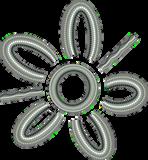
Support First Nations-led planning frameworks.
Enhance climate resilience and disaster preparedness.
Align regional aspirations with government investment strategies
Research and development priorities for sustainable development
The CNA’s research and development activities will be shaped by government priorities, industry needs, and community aspirations.
Drawing from the work of the CRCNA and broader national policy, key thematic areas help to drive innovation and deliver tangible benefits in regional growth, resilience, and liveability. These R&D priorities will be operationalised through an inclusive investment planning process, governed by the CNA’s Board and informed by a network of partners.
Collaborative projects
Partner with universities, research institutions, and industry leaders to develop cutting-edge solutions to development barriers
Place-based
Facilitate inclusive planning and implementation with the best data and knowledge for economic, social and environmental decisionmaking based on science and facts
Economic diversification
Foster SME development and support emerging industries in agriculture, aquaculture, and services
Infrastructure and systems integration
Strengthen regional supply chains, transport logistics, and digital connectivity, using inclusive, evidence-based planning methods.
Capacity building and workforce development
Invest in education, training, and First Nations business development to build local capacity, attract and retain talent and reduce dependence on fly-in, fly-out workforces.
Climate adaption
Promote innovation and localised responses to natural hazards, tropical diseases, water management pressures, tropical productions and the transition to clean energy
Environmental stewardship
Support projects that protect, manage, and leverage the north’s unique environmental assets, like biodiversity, water systems, and carbon stores.
Technology adoption
Promote the adoption of new technologies that enhance productivity, sustainability, and competitiveness
Knowledge transfer
Facilitate the extension of research findings and best practices to relevant stakeholders
Promoting social inclusion
Creating partnerships and platforms that strengthen community networks and empower First Nations leadership
The goal: to ensure that innovation is not only generated in the north, but applied for long-term benefit, economically, socially, and environmentally
Identification of priority R&D investment
The CNA will take a strategic, inclusive approach to identifying and investing in research and development priorities that align with the needs of northern Australia and the broader national agenda.
Strategic alignment
R&D investments will be guided by:
The Northern Australia Action Plan 2024–2029.
Broader Commonwealth and state/Territory policy priorities.
Input from regional stakeholders, including First Nations organisations, industry, research providers, and local communities.
The CNA will develop a rolling five-year Strategic Investment Plan, approved by the Board and submitted to the Minister and Northern Australia Ministerial Forum for endorsement
Consultative planning process
The CNA’s investment planning will be co-designed through:
Stakeholder workshops and targeted consultations
Bilateral engagement with NAIF, RDAs, ONA, research institutions, and development agencies
Integration of local, cultural, and sectoral insights to inform decision-making.
The first investment plan will be independently reviewed after three years to enable timely recalibration and ensure relevance and impact. A second five-year plan will then cover the remainder of the CNA’s initial operating term
Priority setting
The CNA will:
Identify high-potential themes and sectors for investment.
Prioritise projects with clear community, environmental, and economic benefits.
Ensure funding is distributed equitably across geographies, industries, and demographic groups.
Advocacy and engagement
To secure support and build consensus on investment priorities, the CNA will:
Engage with stakeholders across all levels of government, industry, and community
Convene policy forums and collaborative workshops
Highlight the transformative potential of R&D through realworld case studies and data-driven impact
This inclusive and evidence-based approach ensures that CNA investments remain targeted, transparent, and transformational
Funding model: CNA
A strong financial foundation is key to sustaining the CNA's long-term impact. Building on the CRCNA model, its financial plan adopts a collaborative, longterm approach, uniting government, industry, philanthropy, and research to ensure certainty, shared commitment, and alignment with regional priorities.
The CNA aims to become a permanent part of northern Australian architecture by building a strong pipeline toward NAIF investment and supporting the Office of Northern Australia with integrating complex policy issues across northern regions. To sustain the institution’s small but core capacity, exploration of shared investment among northern Australian stakeholders is underway.
1 Research & development investment
2 Expected co-investment
The Commonwealth investment will anchor a broader funding strategy expected to generate $330-$350 million in total investment over a decade
Research providers
Maintain R&D momentum as the CRCNA winds down
Expand focus into adoption, extension, and place-based planning
Bolster governance and operational capacity across the north.
Matched contributions (eg universities, CSIRO): ~$100 million. State and territory governments ~$30 million for regionally relevant priorities.
Industry partners
~$100 million of collaborative R&D funding
Philanthropy and international
Cost-recovery/profit-for-purpose basis
Fee-for-service contracts
For place-based planning and advice
To note: These projections are based on the same level of output as the CRCNA - $75 million from 2017 to 2027 There is scope for additional research and development outputs under the CNA model
3 High return on investment
According to CSIRO and the Australian Research Council data, every dollar invested in R&D returns over $330-$350 in economic benefit
Early-stage research generates a return of 3.3x, while more applied, nearcommercial innovations can deliver returns of over 5x
A $100 million investment could conservatively generate over $330 million in output, with additional social and environmental dividends.
Leverage ratios:
Research institutions: 1:1 match (cash or in-kind)
Industry: up to 1:033 (dependent on project structure).
States/territories: negotiated agreements or project-level contributions
4 Expense forecasting and overheads
Core operational costs (staff, travel, governance, communications) estimated at 15% of annual budget, scaling down over time.
Industry and region-led R&D projects.
Capacity building and extension
Place-based planning and adoption activities
5
Funding streams
The CNA will draw on a diverse mix of funding sources:
Australian Government grants Via the CRCNA legacy, departmental R&D programs, and other federal initiatives.
State and territory government agreements
Supporting region-specific priorities and co-investment.
Industry contributions
Through direct funding, in-kind support, or matched investments in collaborative projects.
University and research institution allocations
Aligned with strategic partnerships and project delivery.
Philanthropic donations
Targeted at social, cultural, or environmental innovation.
Fee-for-service planning and advisory work
Particularly for place-based planning projects commissioned by jurisdictions or development agencies
International support
For globally relevant work on climate adaptation, Indigenous enterprise, tropical health and environmental resilience where the north is seen as world-leading
6 Risk mitigation
A staged funding model with annual performance reviews, independent evaluation, and a five-year investment plan (endorsed by the Minister) will ensure transparency, accountability, and alignment with national priorities
7 Monitoring and evaluation
The CNA will use a framework for tracking progress, evaluating impact and involve regular reporting to partners and stakeholders
Example key performance indicators could include:
Economic impact
Jobs created, startups incubated, industry partnerships, strengthened supply chains
Research excellence
Number of peer-reviewed publications, citations, research grants
Social inclusion
Indigenous-led projects, community engagement metrics
Environmental outcomes
Climate adaptation solutions, sustainable practices adopted.
Capacity building
Number of PhDs trained and other workforce development programs delivered
Market and risk analysis
A successful CNA must be grounded in a clear understanding of regional needs, market opportunities, and implementation risks. This section outlines the core market drivers and risk considerations that inform the CNA’s strategic design.
Market and development context
Northern Australia faces a unique combination of geographic, demographic, and structural challenges: Regional needs assessment
Low population density and high service delivery costs.
Persistent infrastructure gaps (eg transport, health, digital connectivity)
Climate and environmental pressures
Ongoing economic reliance on a narrow set of industries
The CNA will tailor its investment to address these regional complexities, with a focus on place-based impact.
Stakeholder landscape
Primary beneficiaries and collaborators include:
Regional SMEs and agricultural enterprises.
First Nations organisations
Local govts, RDAs, economic organisations, resource management, health networks.
Research providers (e.g. universities, CSIRO).
Industry investors and financiers (eg NAIF)
Community-based development initiatives
Emerging industry trends
There is growing national and international demand for:
Clean energy solutions (eg hydrogen, solar, renewables)
Sustainable agriculture and aquaculture.
Critical minerals essential to the global energy transition.
Carbon farming and ecosystem services
Indigenous-led economic models
Food security, water resilience, and regional and tropical health innovations.
Increased adoption of diversified and integrated cropping and animal production.
The CNA is uniquely positioned to support these sectors through targeted R&D and partnerships.
A core role of the CNA will be ongoing horizon scanning to identify emerging risks, opportunities, and knowledge gaps
By synthesising insights from across sectors, the CNA will guide strategic investment in research and innovation,
ensuring northern industries and communities are well-positioned to adapt, thrive, and respond proactively to future challenges.
Risks of inaction
Without a funded successor to the CRCNA, several strategic risks emerge:
1
Fragmentation
Loss of coordination between government, industry, research, and communities, leading to inefficiency and duplication
2
Decline in place-based R&D
Reduced investment in research tailored to northern conditions, especially in sectors like aquaculture, Indigenous enterprise, and water security.
3
Weakened First Nations engagement
Loss of hard-earned trust and partnerships in Indigenous-led development
4
Productivity declines
Stalled development in innovative service delivery, industry resilience, climate adaptation, sustainable land use, and disaster resilience
Environmental and cultural oversights
Short-term projects risk neglecting long-term sustainability, leading to unintended consequences for Country and communities 5
6
Health access and equity gaps
Remote communities may face health disparities and lack access to tailored medical research and innovation.
7
Exposed sovereign risks
Increased exposure to risks in areas such as biosecurity, defence technologies, and infrastructure resilience
8
Reduced investor confidence
Lack of a credible institution to de-risk investment may slow private sector participation
The CNA is designed to mitigate these risks by sustaining a trusted platform for collaborative, high-impact development.
Its regionally embedded structure, cross-sectoral partnerships, and long-term funding model will provide continuity and confidence for all stakeholders
Governance
The CNA will operate as a not-for-profit company limited by guarantee, with a strong governance structure to ensure transparency, strategic alignment, and inclusive decision-making.
Legal and organisational structure
The CNA will be established to serve a defined public benefit purpose.
All earnings will be reinvested into R&D for the sustainable development of northern Australia
A fit-for-purpose constitution will define internal governance arrangements, aligned with Corporations Act 2001 (Cth) obligations
Board structure and roles
An independent, skills-based Board will govern the CNA. Its responsibilities will include:
Strategic direction – setting the mission, goals, and long-term vision
Financial oversight – approving budgets and ensuring sound financial management.
Compliance and risk management – overseeing legal, regulatory, and operational risks
Stakeholder engagement –representing the CNA to government, industry, and community partners
Executive oversight – appointing and supporting the CEO and senior management.
Ethical leadership – ensuring integrity, transparency, and accountability.
Transition from the CRCNA
The CRCNA will formally wind down by 30 June 2027.
Intellectual property, organisational assets, and partnerships will transition to the CNA where appropriate.
Early appointment of a Chair, CEO, and key staff, preferably by late 2026, will allow for a seamless operational handover
Initiate discussions on establishing foundational members of the CNA
The Board will include expertise from: Industry sectors (eg agriculture, health, energy)
First Nations organisations
Research providers
State and Territory governments
An independent Chairperson will be appointed by the Commonwealth Minister in consultation with the Northern Australia Ministerial Forum Board members will be publicly nominated and assessed by an independent panel The Board will appoint a CEO, who reports directly to it.
Operational leadership
A team of skilled program managers will support delivery by:
Working directly with industry and research partners.
Managing project delivery and investment timelines
Supporting adoption pathways and reporting outcomes.
Regional presence
Facilitating focused, place-based R&D that drives solutions and investment with regional and local partners
Early establishment funding will retain critical CRCNA expertise and trusted relationships.
The CNA will remain proudly northern-based, keeping its presence, leadership, and decisions grounded in the communities it serves.
Headquarters and offices
Co-located offices will be established or maintained in key northern centres including:
Townsville
Cairns
Mackay/ Rockhampton
Darwin/ regional NT
Kununurra
Broome/ Karratha
Place-based delivery in action
Strengthen relationships with local industry, research, and government partners
Enable staff to engage directly with community stakeholders.
Support place-based planning and rapid translation of research into action
By embedding the CNA within regional ecosystems, it ensures work remains relevant, responsive, and locally informed
Delivery of results: operations and partnerships
The CNA’s operational model is designed to ensure that research translates into real-world impact. This will be achieved through a combination of strategic planning, effective project delivery, and strong partnerships across sectors.
Day-to-day operations
The CNA will operate through a lean and regionally embedded structure, supported by a skilled executive team and program managers
Core responsibilities will include:
Strategic planning
Developing and managing fiveyear investment plans aligned with government and stakeholder priorities.
Project management
Overseeing the selection, contracting, and monitoring of R&D projects
Extension and adoption
Supporting the uptake of research outcomes by end-users through tailored outreach, training, and communication.
Performance tracking
Monitoring progress against KPIs and reporting outcomes to funders and stakeholders.
Program managers will work closely with delivery partners to ensure that projects stay on schedule, meet agreed objectives, and demonstrate clear impact.
Partner collaboration
The CNA will work closely with a broad ecosystem of partners, including:
Members and stakeholders from industry, First Nations organisations, local governments, and communities
Other Cooperative Research Centres and research development corporations (RDCs) to share lessons and leverage expertise.
Government agencies at Commonwealth, state, and territory levels to align priorities and funding streams.
NAIF, ONA, and RDAs to integrate R&D with infrastructure, policy, and planning investments
Partnerships will be built on co-design, shared accountability, and mutual benefit, ensuring projects are grounded in real regional needs and positioned for adoption.
By combining strong operational systems with deep regional engagement and national coordination, the CNA will deliver results that are practical, inclusive, and enduring.
Timeline and milestones
A 10-year investment horizon is essential to ensure continuity, build momentum, and deliver sustained outcomes across northern Australia. Short-term funding cycles do not match the complexity of regional development, particularly where coordination, trust-building, and long-term planning are required.
Continuity matters
The CRCNA has built strong networks, institutional trust, and a track record of delivering regionally relevant R&D
Without a timely transition to the CNA:
Critical research capacity may be lost through a “brain drain”
Institutional knowledge and community trust could be eroded.
Momentum around key policy, planning, and development efforts may stall
To avoid this, the transition must be well-timed and well-managed
Transition objectives
Ensure retention of regional expertise and existing partnerships
Develop a detailed five-year investment plan, shaped through stakeholder engagement.
Establish robust governance, reporting, and evaluation mechanisms
Begin delivery of high-priority, regionally aligned projects in year two of operations
Flexibility with accountability
The CNA’s operational plan will allow for adaptation to shifting policy, environmental, and economic contexts, while maintaining focus on long-term outcomes
Independent evaluation points (e.g. after three years) will provide assurance and opportunities for recalibration
By investing over a full decade, the CNA will be positioned to lead not just one-off research projects, but a lasting transformation in how northern Australia develops - driven by innovation, aligned with community needs, and resilient to future challenges.
Key milestones
A clear and coordinated transition is essential to maintain momentum and avoid gaps between the CRCNA and the new CNA. This timeline outlines key milestones for establishment, including early funding decisions, executive appointments, and governance setup, ensuring the CNA is fully operational by mid-2027 and ready to deliver from day one
Conclusion
Now is the time to turn vision into action by anchoring research and development at the heart of lasting progress across northern Australia.
The opportunity to shape a stronger, more resilient northern Australia is real, but only if met with timely, coordinated action
Establishing the Centre for Northern Australia (CNA) builds on the proven CRCNA model and responds to the urgent need for long-term investment, regional leadership, and collaborative innovation
With a place-based and inclusive approach, the CNA will drive economic diversification, climate-smart growth, and deliver lasting social and cultural benefits across the north
Sustainable development in northern Australia demands a long-term commitment to three core pillars:
Economic diversification and productivity
Social inclusion and First Nations empowerment
Environmental stewardship and climate resilience
The CRCNA laid a strong foundation, but with funding fully allocated and its term ending in June 2027, there is now a risk of losing critical momentum and hard-won regional trust
The CNA will consolidate this progress by:
Being headquartered in the north to ensure regional leadership
Operating under inclusive, skillsbased governance
Translating research into realworld outcomes
Aligning with national and jurisdictional priorities
Delivering enduring value through innovation, capacity, and partnerships
To unlock northern Australia’s full potential, the Australian Government, together with industry, philanthropy, and research partners, must commit to establishing the CNA within the next 6 to 8 months.
Appendices
Northern Australia quick facts
Referenced from the CRCNA Data Portal: crcna.com.au/data-portal
Land and water
53% of Australia’s landmass, with 17 million hectares of arable soil
10,000km of coastline and Australia’s biosecurity frontline.
78% of land is under First Nations interests
Northern Australia accounts for 60% of Australia's surface water runoff and 45% of Australia's potentially divertible water yield
Economic
Northern Australia recorded Gross Regional Product of $2798 billion in 2022
In 2022, there were 111,320 businesses actively trading in northern Australia. That’s 4.4% of the 253 million businesses nationally
Within 5 flying hours of northern Australia there’s 400 million people to the north and 27 million people to the south
Environmental
Between Broome and Cooktown lie over 60 major rivers and hundreds of streams, spanning 1 million km, forming the world’s highest density of intact tropical rivers, and carrying two-thirds of Australia’s freshwater
11 tropical cyclones threaten the north annually with 4 to 5 reaching land.
23 million feral pigs estimated to roam Cape York, damaging precious Country and waterways
People
13 million people 5.3% of national population. First Nations population over 200,000, 16% of northern Australia compared to 38% of national population
Population is young and diverse, median age is 35-39 years with more females to males
Health
Over half the northern population lives in outer regional areas, and 31% in remote or very remote regions
Agriculture
8,059 agricultural businesses in the north, that’s 92% of the total 87,402 ag businesses nationally 7,339 - northern Qld | 370 - NT | 350 - northern WA.
183 million hectares of agricultural activity in the north, around 46% of the nations total ag area
Australia has 6,500 native bush foods, but only 13 are marketcertified The $81 million industry is growing rapidly.
Aquaculture
The north produces 20% of Australia’s aquaculture
The industry grew from $223m and 520 jobs in 2017 to a projected $134b and 1,400 jobs by 2030
Climate change in northern Australia Appendices
Climate change is already impacting northern Australia, with effects expected to intensify, posing growing risks to liveability, workforce stability, and productivity across key industries.
Rising temperatures
Average temperatures have already increased by 15°C since 1910 across the Northern Territory.
Under a high-emissions scenario, annual temperatures could rise by 2.0–2.5°C by mid-century, with some areas experiencing even more extreme heat
The number of very hot days (>40°C) is projected to increase significantly – for example, from 7 to 43 days per year in Batchelor, NT
Social and economic impacts
Remote communities, especially First Nations populations, face heightened vulnerability due to infrastructure gaps and cultural ties to land
Health risks from heat stress, vector-borne diseases, and food insecurity are increasing
Ecosystem and biodiversity stress
Climate change is placing pressure on savannas, wetlands, and coastal ecosystems, many of which are globally significant.
Species migration, habitat loss, and invasive species are all on the rise
Shifting rainfall patterns
Wet season rainfall (Dec–Feb) has increased in areas, while dry season rainfall (Jun–Aug) has declined
These shifts can disrupt agriculture, water security, and natural ecosystems
Increased fire risk
The number of days with dangerous bushfire conditions has risen across nearly all of northern Australia.
Hotter, drier conditions are expected to further elevate fire frequency and intensity
Cyclones and extreme weather
Cyclone frequency is uncertain, but intensity is expected to rise, increasing destructive winds and storm surges
Compound events, like heatwaves followed by flooding, are becoming more common
The good news!
Northern Australia also holds enormous potential to lead in climate adaptation – from Indigenous-led land management to renewable energy innovation.







